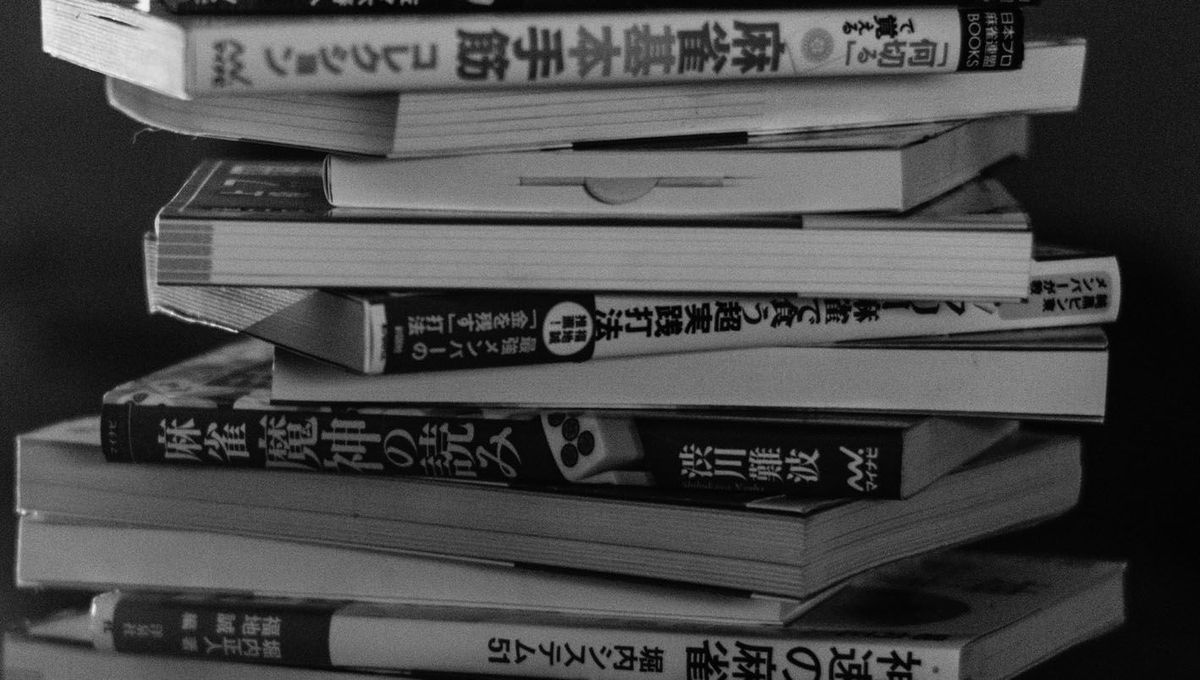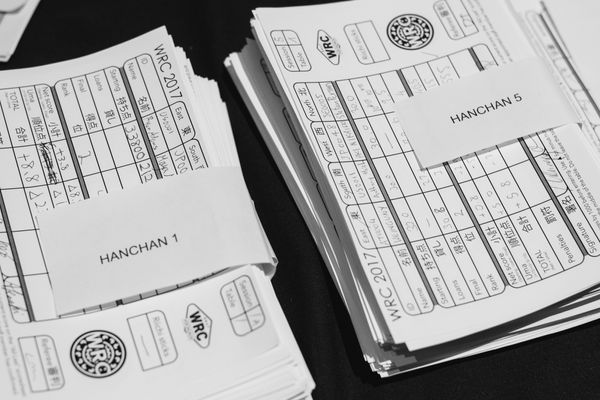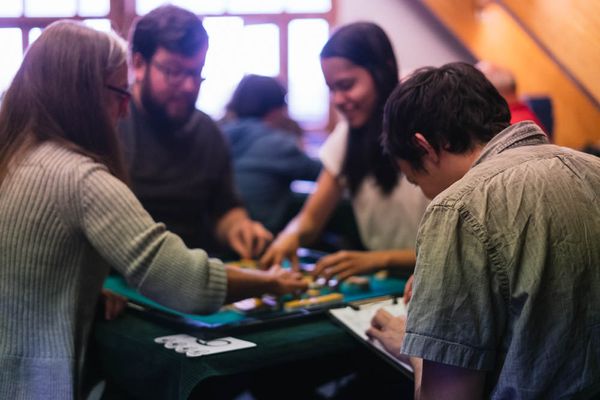Stuff from around the internets

I’ll come out and be a little honest here. When I started writing for Osamu’s blag I wanted to do something special, to make a difference. There is virtually zero English material on the internet, which is surprising in itself, especially as people are extolling their helpful communities and grouphugs and guilds and twitters and endless ranking lists. I didn’t want my community to be doomed to torpor, rising occasionally to answer random newbie questions. Especially when the fucking answer is *always *furiten. I wanted to write strategy. And theory. Oodles of it.
Of course, as you can see, we don’t really have much of that around here. If you came in expecting cunning stratagems and hot tips, I’m sure you’ll have been disappointed.
(However, on the off chance you are holding

 and have no idea what to do, well, you’ve definitely come to the right place. Enjoy our extensively documented coverage of this topic here.)
and have no idea what to do, well, you’ve definitely come to the right place. Enjoy our extensively documented coverage of this topic here.)
So what happened? I played more. I got better.
Strategy is an excellent word for mahjong play. Strategy is long term, and has nothing to do with short-term results. You win some battles and you lose some battles, but what you’re trying to win is the war. You can mix it up here and there, or try to be tricky and deceitful, but never lose sight of your long term plan.
Whatever it is.
If you want to teach people how to play correctly, you have to teach the entire thing. I’m not saying you have to start from scratch, but a decent player has to cover all the basic facets of the game thoroughly. In order to teach this kind of stuff, you need an even deeper understanding of whatever it is you’re talking about. Am I a decent player? I’d like to think so. Am I capable of shovelling this stuff out to eager readers? Not a chance.
It also has something to do with confidence, I guess. It’s easy to find laughable stuff around the internets. Too many people think they’re doing the world a favour with their solid output, only to find it’s regarded as prime comedy material. This is especially true when you consider mahjong. There are usually only one or two ‘right’ (with some marginal) answers at any decision point. Anything else and you are dead wrong.
If you wish to defend shitty play, I’m sure some cool dude will bring peace on earth by saying “let’s not argue about it, everyone has his own style of play.” What he means is “this guy is an idiot.”
So no, I have no intention of posting my mistake-ridden game records and reasoning. Just take it from me, it’s pretty awful. Also I doubt I will be pushing out any insightful and educational posts any time in the near future, so you can give the F5 key a rest. Sorry.
Here’s the next best thing, though. It’s a distant second but it’s the best I can do. I’ve dredged up all kinds of moonrunes from around the internet, with stuff from actually good players. I’m pretty much focusing on the little things, minor stuff you might want to watch out for in your normal game to squeeze out that extra little bit of value. If you have gaping holes in your play and bleed points everywhere like a chainsaw massacre victim, I don’t want to be the one to fix that.
Calling and anticipating dora by 六分儀
One of the more well-known players in the tenhou community. All his stuff is simple and solid. This bit I’ve picked out is about taking into account drawing or calling extra dora that can be incorporated into your hand smoothly. You can pretty much get the general principle by looking at the second example hand:










 CHI
CHI 

 DORA
DORA 
A simple open hand in tenpai, worth 3900 for nondealer, or 5800 for dealer.
It seems as though you can randomly choose between 

 since you can’t modify the part in tenpai anyway. However, the correct deal here is always
since you can’t modify the part in tenpai anyway. However, the correct deal here is always  , since it allows you to incorporate calling
, since it allows you to incorporate calling  or
or  from the player on your left, doubling the value of your hand. Such a simple thing, but when I read it some days ago it blew my little mind.
from the player on your left, doubling the value of your hand. Such a simple thing, but when I read it some days ago it blew my little mind.
A situation with no safe tiles by puyo
If you chill with us he needs no introduction, as we would all hang out watching Saki on the live stream every Sunday, raging at physics-defying bath steam together. One of the few non-Japanese houou denizens, his blog which churns out helpful stuff regularly is nearing its millionth hit soon, unlike this crap which will get like 200 reads, 45 of them being osamu.

Pretty textbook situation here, begging for a textbook response. With zero safe tiles and sitting on a sizable lead however, he chose to cut the  . (If you thought of cutting the
. (If you thought of cutting the  just like him even before you read this, that’s just because you’re horrible)
just like him even before you read this, that’s just because you’re horrible)
A rough translation of his narration:
“Other than  , the entirety of your hand is made up of non-suji tiles. Even after you deal it, there’s only a small chance you will draw a safe tile next turn. Even if you do, it’s impossible to guarantee you will be safe through even the next few draws.
, the entirety of your hand is made up of non-suji tiles. Even after you deal it, there’s only a small chance you will draw a safe tile next turn. Even if you do, it’s impossible to guarantee you will be safe through even the next few draws.
Furthermore,  is the tile with the least chance of dealing in, but by no means is it absolutely safe. Having to cut two or three suji would approximately equal the danger of cutting a non-suji 456 tile. If you’re planning on getting across this rickety bridge through a series of suji, there is a very real risk of dealing in regardless. You fold hands to avoid dealing in. If you can’t avoid dealing in, you might want to consider whether folding is appropriate or not at all.
is the tile with the least chance of dealing in, but by no means is it absolutely safe. Having to cut two or three suji would approximately equal the danger of cutting a non-suji 456 tile. If you’re planning on getting across this rickety bridge through a series of suji, there is a very real risk of dealing in regardless. You fold hands to avoid dealing in. If you can’t avoid dealing in, you might want to consider whether folding is appropriate or not at all.
Next up is situational considerations. Many self-proclaimed good players overly simplify these situations, playing extremely passively when in the lead, and being overaggressive when behind. The result is too many avoidable deal-ins or turnarounds. You’re only in the early stages of a hanchan, even with a 20000+ lead, there’s no guarantee you’re going to finish in first, especially against players of this level.”
One of the factors pushing him forward though is the fact that he has a substantial hand that improves easily, pinfu in 1 shan ten. He does go on to say that if he drew blanks and the number of safe tiles increased he would have gone on the defensive.
(read the rest along with the results at his blog)
So don’t say I never do anything for you guys.



